In the 1960s, the world was grappling with events of wars and hostile relations among nations. With so much blood already shed and countless lives lost in World War I & II, time was surely testing human survival on their very own planet.
With advancements in technology around the globe, powerful nations were not only creating and stocking up nuclear missiles but were also involved in a race to establish supremacy over each other on completely new territory.
In fact, ‘territory’ would be a misnomer as it was neither land nor sea, but a region of emptiness – space (on a quantum level, space is certainly not empty, but for the sake of this article and the amazingly beautiful references made by the Apollo astronauts, let’s assume it to be so).
Dawn of the Apollo Era
With the ‘Space Race’ intensifying, both the U.S.S.R and the U.S. had already locked horns to be victorious, it was the former who had gained an upper hand. Circumnavigating the planet both by a satellite and a human, the U.S.S.R was closely inching toward the victory line.
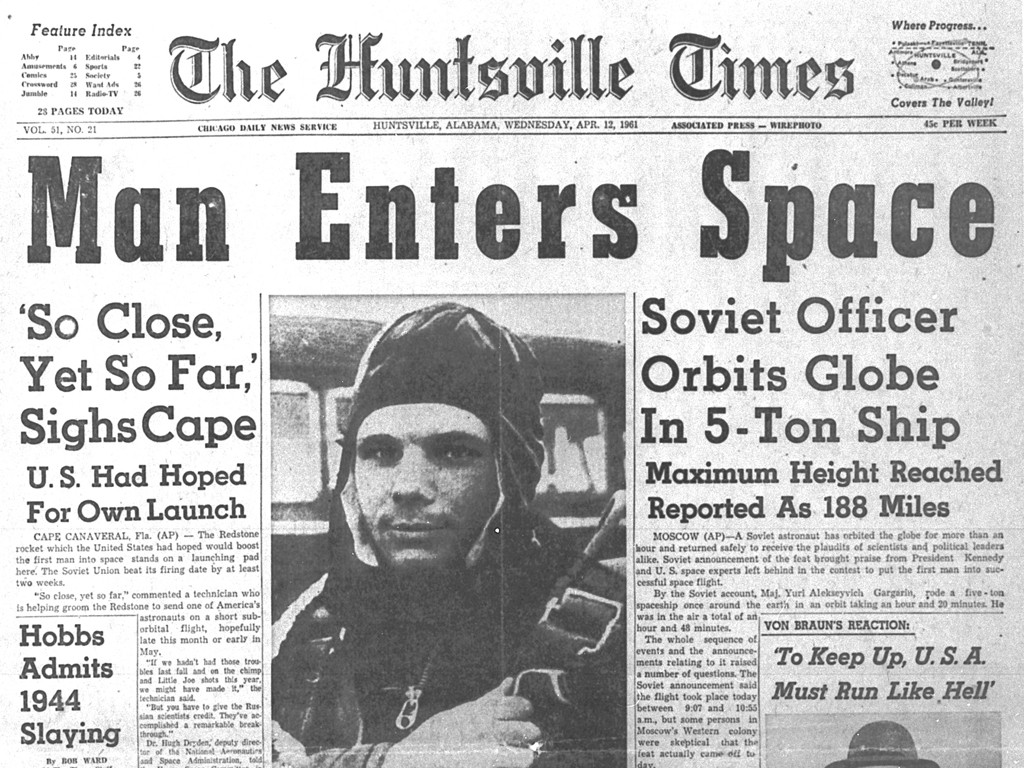
The U.S. started feeling the pressure and in one of the most daring and equally challenging missions ever undertaken, the National Aeronautics and Space Administration (NASA) in late 1968, launched the Apollo 8 mission – the first ever manned mission to visit the Moon (without landing on its surface) and be brought back to the Earth safely.
What makes this mission more challenging was the predecessor missions which were not fully successful and none of them had flown humans into deep space.
Around two years before the Apollo 8 mission, the first Apollo mission – Apollo 1 was a disaster. A fire in the command module during a launch pad test killed all the 3 crew members, eventually leading to a halt in undertaking future missions of the similar mature and questioning the lives of humans over the so-called space race.

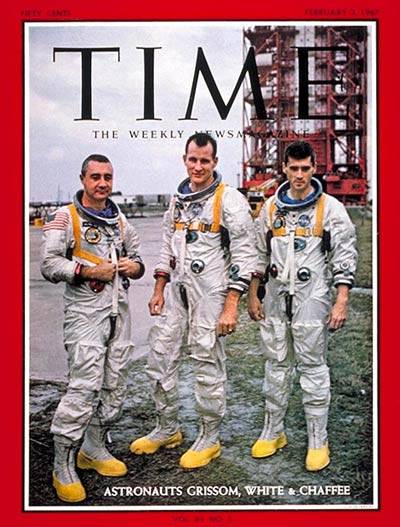
Beating all the odds, the Apollo 8 mission took off on Dec 21, 1968, and was a great success. All three astronauts went to the Moon, circumnavigated it, took photographs, and conducted experiments in the module around 60 miles above the lunar surface.
What Made the Mission Iconic?
As the Apollo 8 spacecraft got captured by the lunar gravity and started making orbit around the Moon, it went to the back side of it, which remains totally invisible to us here on Earth (it is because the Moon is tidally locked to the Earth – it rotates on its axis in precisely the same duration of time as it takes to orbit the Earth).
During that time, the astronauts went into radio silence, and all communications with the Earth were disconnected till the time the spacecraft came around.
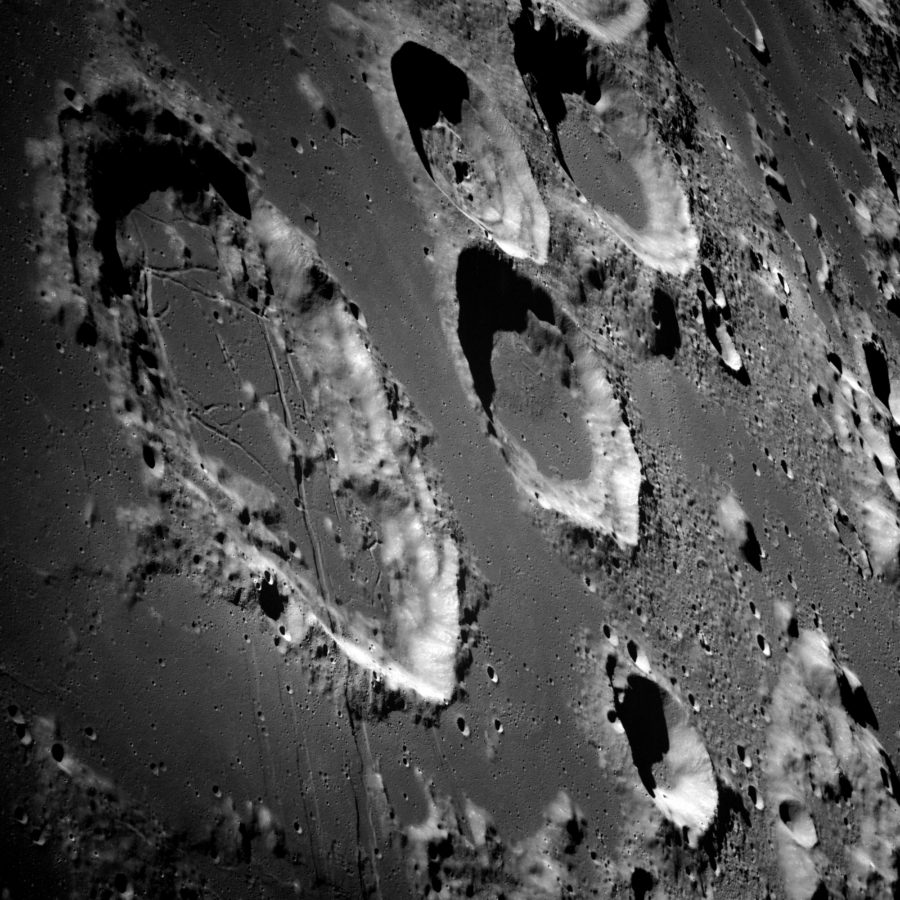
The lunar module pilot William Anders was taking photographs of the craters and other lunar surfaces for further scientific analyses. After some time, he was amazed by the view of the Earth rising over the Moon’s horizon.
He famously quoted – “We came all this way to explore the Moon, and the most important thing is that we discovered the Earth”.
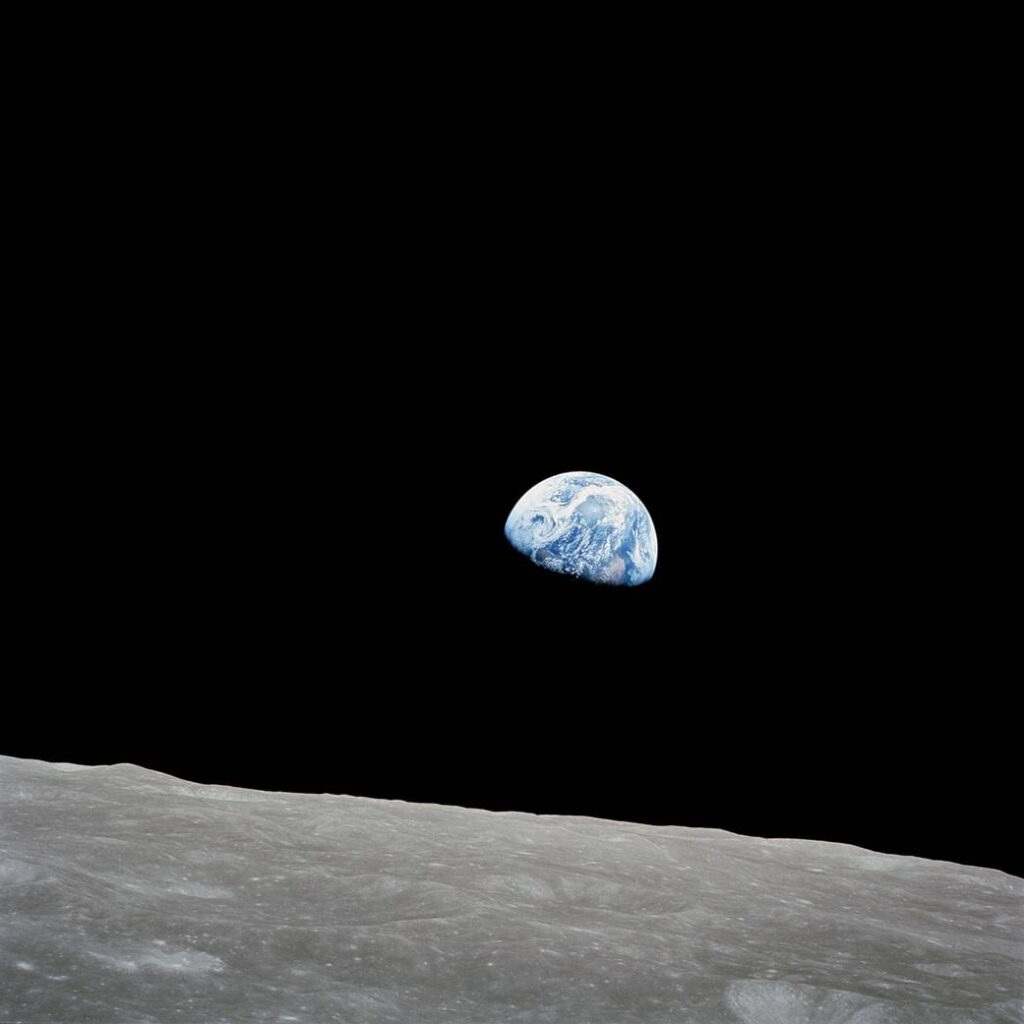
Cultural Implications of the Earthrise
The picture was indeed a cultural transformation across the planet. Probably for the very first time, people started to gain a perspective of their existence.
On Earth, we are divided by countless entities – borders, ethnicity, skin color, politics, greed, and human ego, but in space, the division is not just blurred, it doesn’t exist at all. In the low Earth orbit, continents and water bodies have some demarcation, but as we move away from the Earth, as the Apollo 8 astronauts did, every division fades away in the emptiness of space.

In the words of the command module Pilot James Lovell (after contemplating the Earthrise),
“..seeing the Earth at 240,000 miles, my world suddenly expanded to infinity. I put my thumb up to the window and completely hid the Earth. Just think, over five billion people, everything I ever knew was behind my thumb. As I observed the Earth, I realized my home is a small planet, one of nine in the Solar System. It is just a mere speck in our Milky Way galaxy and lost to oblivion in the universe”.
Note: Pluto wasn’t de-classified and was still a planet back in 1968, hence the reference to nine planets.
The Apollo 8 mission gave humanity something to cheer for and introspect amidst the prevalent global crises.
Artemis I: The Apollo Mission of Our Generation
Nearly 54 years after the Apollo 8 mission, NASA is ready for going back to the Moon again. With its vision of a deep space exploration system, Artemis I is the most powerful rocket in the world and is scheduled to travel thousands of miles beyond the Moon. This will make Artemis I the farthest spacecraft ever to travel in deep space for any spacecraft designed for human missions.

Artemis I consists of the Orion Spacecraft and the Space Launch System (SLS) rocket. The Orion Spacecraft is a next-generation spacecraft that is designed keeping in view the upcoming human missions to deep space.
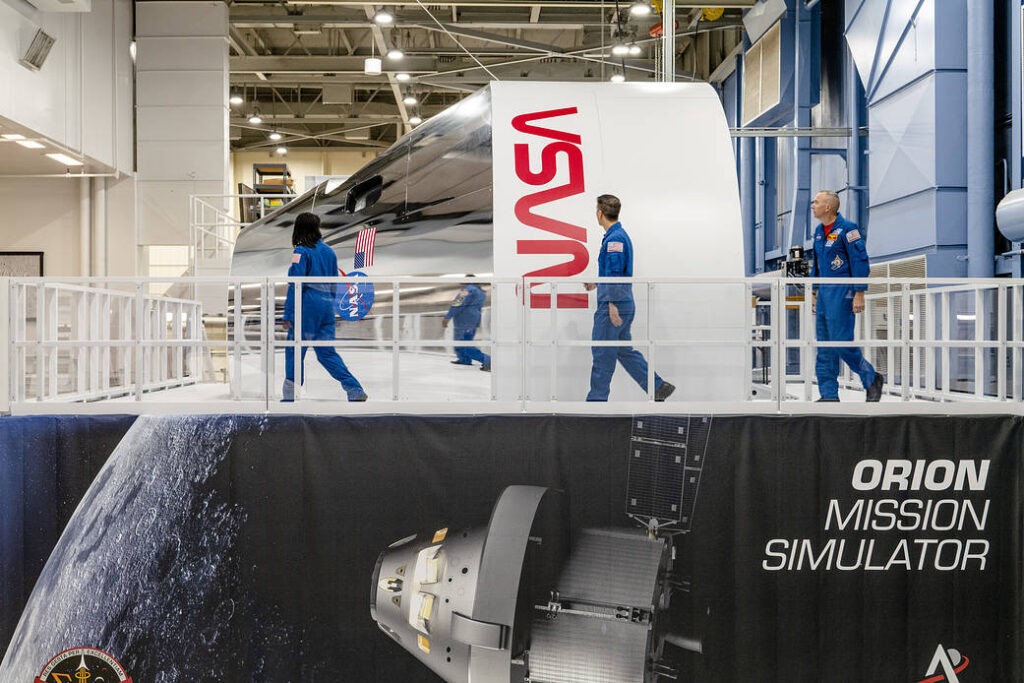
The SLS is the most powerful rocket in the world and with the help of one of its key maneuvers called a Trans-Lunar Injection (TLI), it will be able to send Orion thousands of miles beyond the Moon.
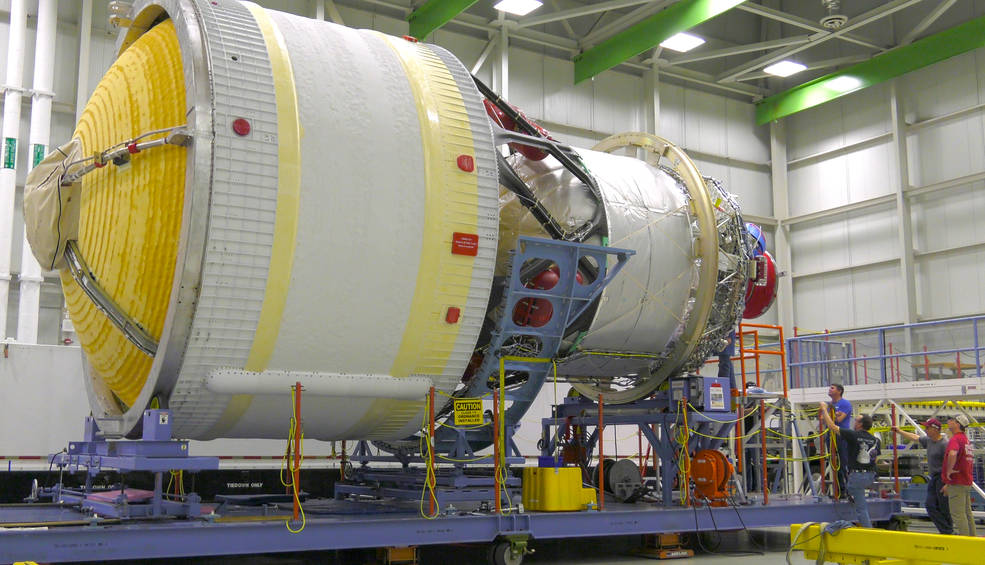
On nearing the Moon, the Orion spacecraft will enter an oval-shaped orbit around it and will be about 60 miles above the lunar surface and then will move out to 40,000 miles beyond the Moon. During its final orbit around the Moon, Orion will ignite its main engine to push itself out of lunar orbit and towards its home – the Earth. It will re-enter Earth’s atmosphere at a staggering speed of 24,500 miles per hour to finally splash into the Pacific Ocean.
The primary goals of the Artemis I mission are to test and showcase Orion’s capabilities in a spaceflight environment and to assure a secure re-entry into Earth’s atmosphere, descent, splashdown, and recovery prior to the first crewed flight of Artemis II.
Artemis I finally launched on Wednesday, 16 November 2022 after initial scrubbing in August, September, and October due to factors including an engine bleed in one of the rocket’s engines and weather conditions. The mission duration is around 26 days and the spacecraft will travel a cumulative distance of 1.3 million miles on the two-way trip to the Moon.

But Why to the Moon Again?
Undoubtedly, we have been to the Moon before during the famous Apollo 11 mission but that was around 50 years ago. And at this time, we won’t just be a tourist. The plan is to make a human base and build a long-term human presence for the years to come.
The following points reason the ‘why’ question:
- The Moon is more or less the same since the beginning. Compared to the Earth which has gone through many cycles of transformation, the Moon is pristine. It holds opportunities for discovering many aspects related to our planet and even the Solar System.
- Most of the major lunar missions have led to innovations and breakthrough technologies that have shaped the global culture. Solar panels, firefighting suits, and MRIs, to name a few, are the innovations inspired by the earlier lunar missions.
- The collaboration of NASA with other countries’ space programs generates thousands of jobs in this sector – it is no longer the ambition of a single country but is a shared effort woven together by a yearning for the greater good.
- To begin our journey of being an interplanetary species, we need to start somewhere. The Moon is an ideal place for the initiation phase. It is relatively nearer to other planets, and gradually we can learn about human survival and thriving in a partial gravity environment.
- Probably the most obvious reason is the ‘Mars calling’. We need to start making space outposts in our journey to the red planet. We need to learn what it takes to build and establish a human community on another cosmic shore and what else could be a better place than the Moon to start with?

Closing Thoughts
While Apollo took us to the Moon in the 60s and 70s, it is now Artemis (the twin Sister of Apollo in Greek mythology) who is going to lead us toward building a base and probably guide us in landing the first human on Mars.

Imagine a Moon base where Earthlings can have easier access for travelling to and fro, conduct science experiments on a larger scale, and test and challenge human limits further in order to be ready for missions to deeper regions of the Solar System. The seed of the first man landing on the red planet will be sown in the Artemis missions and will bear the fruits in the form of unprecedented explorations for what humankind is destined for.
We are finally ready to go and go much farther beyond what once was impossible.
“Exploration is in our nature. We began as wanderers, and we are wanderers still. We have lingered long enough on the shores of the cosmic ocean. We are ready at last to set sail for the stars.”
Carl Sagan

Subscribe to Primitive Proton Newsletter
Sign up to keep up to date with the latest news and curated blogs in the world of space, science, and technology.
Your email is never shared with anyone. You can opt out anytime with a simple click!
WE PRIORITISE PRIVACY.

